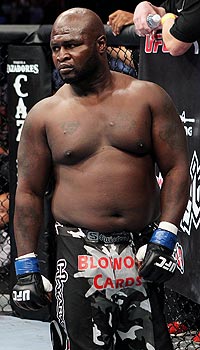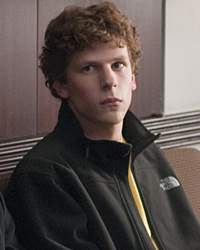Saving may be making a comeback, but it still hasn’t gotten its sexy back, particularly if you’re a man.
Earlier this month, the Commerce Department reported that the personal savings rate in June was a much-improved 6.4 percent and that the number had risen as high as 8.2 percent in the depths of the stock market doldrums in the spring of 2009.
Those who are single may not have been rewarded for their parsimony, though. Now comes some survey data from ING Direct, the people who would like you to save more money in their online savings accounts. In June, the company asked 1,000 people which words would come to mind if someone was fixing them up on a blind date with someone described as frugal.
Just 3.7 percent answered “sexy,” while 15 percent picked “boring” and 27 percent chose “stingy.”
Anyone who urges better money habits on the masses for a living ought to be gravely offended by this, though Ramit Sethi, author of “I Will Teach You to Be Rich,” tried to take it in stride. “The term frugality has been so perverted that it now means ‘No, no, no’ to everyone, whether it’s shoes or lattes or travel,” he said. “I don’t think it’s the right word.”
Yet it is a term that the online dating company eHarmony screens for in its patented compatibility test, asking people to rank themselves on a seven-point scale for frugality (along with things you would expect, like compassion and generosity).
“It makes sense, right?” asks Gian Gonzaga, 40, who has a doctorate in psychology and is eHarmony’s senior research director. “You look at the attractiveness angle, but farther down the road, money and finances are one of the biggest conflict areas couples traditionally face. And a lot of that comes down to having enough or not having enough.”
Well, maybe it makes sense and maybe it doesn’t. If your frugality has the potential to turn off nearly half of the mating pool, it raises a question: How best to broadcast your financial values and seek significant others who share your approach without coming off as a tightwad or a gold digger?
This challenge is a fairly recent one. Several generations back, personal ads could not have been more explicit about finances, since everyone knew that women generally had no income and a marriage involving a man of means was the only way to live comfortably.
This posting, from The New York Herald in 1860, was about par for the course, according to Pam Epstein, an adjunct professor at the Newark campus of Rutgers University, who wrote her history Ph.D. thesis on older ads. “A young lady, rather good looking, and of good address, desires the acquaintance of a gentleman of wealth (none other need apply), with a view to matrimony,” the ad read.
Ads from men from that period seemed custom-built to fit that bill. “The advertiser, a successful young business man of good education, polite manners and agreeable address, having recently amassed a fortune and safely invested the same, wishes to meet with a young lady or widow,” one said.
“There was this idea that men were very frugal,” said Ms. Epstein, 33, who posts copies of some of the ads she’s dug up at advertisingforlove.com. “You were going to work hard and save your money, and then by doing so, you would be able to support a wife in comfort. I do see a lot of ads saying ‘I’ve been wrapped up in business all this time and now I can support a wife comfortably.’ ”
Flash forward to today, however, and things get more complicated. Some people do put down an income range in their online dating profiles, though it’s not as if anyone is auditing the figures for honesty. Many men, meanwhile, pose peacocklike in front of their cars or boats or homes. The message here is less clear, though. Are these meant to be trophies, a sign of a fortune already amassed? Or is it the mark of a spendthrift? Or an indication that he’ll spend all of his time on the water, and you’d better be ready with the Dramamine if the relationship is going to work?
“There’s nothing admirable in frugality, because it’s invisible,” Ms. Epstein notes.
But even if you could transmit that value through an online dating profile, would you want to? It turns out that the answer to that may depend on whether you’re a man or a woman.
The ING Direct survey, which was conducted by phone and has a sampling error of plus or minus 3 percentage points, presented one more potential label for that frugal blind date: smart. And in a promising sign for the nation’s solvency, that was the term chosen most often, picked by 49 percent of respondents. EHarmony also crunched the numbers for me on 30 million matches it made in July and found that both men and women were 25 percent more likely to have a potential mate reach out to them if they identified themselves as a saver rather than a spender.
Curiously, however, 56 percent of men in the ING Direct survey gave “smart” as their favorite answer while just 42 percent of women did. (The numbers were similarly flipped on stingy: 33 percent of women labeled the potential mate that way, while just 20 percent of men did.)
What’s going on here? “My suspicion is that the value of frugality depends on whose money will presumably be spent,” said Reuben Strayer, 34, a physician in Manhattan who does not broadcast his profession or true income in online personals. He always pays for the first date and does not object to providing for a wife one day, he adds; he just doesn’t want to attract the kind of woman who is specifically looking for someone who will do so.
But even if many men still make more money than women and are wary of mates who would want them to spend it, they may not want to advertise it. “Frugality may or may not have anything to do with how much he loves you,” said BJ Gallagher, 61, an experienced online dater and author of several self-help books for women. “But for a lot of women, love looks like ‘Take care of me and give me things.’ ”
My jaw dropped listening to some of the dated stereotypes coming out of Ms. Gallagher’s mouth and I told her so. “I try not to get into right and wrong,” she replied. “I’m not a professional finger-wagger. I just hold a mirror to things. I’m descriptive, not prescriptive.” She said she’d been in relationships where she provided most of the income and had seen plenty of gay and lesbian couples where one mate provided the “masculine” energy that kept things in balance.
Fair enough, but what should you do if you want to communicate prudent financial values to a potential mate without dropping the unsexy F word?
Robert Epstein, a psychologist who has studied online dating, said he struggled with this during the seven years it took to produce a beta version of the relationship compatibility test now online at arewegoodtogether.com. He suggests that people who feel strongly about good money habits talk about how they love a great bargain.
Topher Burns, 27, a Manhattan resident who is about to move in with a man he met online, said he realized that he had it a bit easier than heterosexual men who might feel compelled to pay for dates all of the time. But he still took a subtle approach in his online profile by talking about how he loved discovering the newest cheap eats. It shows, he explained, both a love of quality and a respect for value, which seems like a fine message to send no matter who is picking up the check.
The trick, it seems, is to use such subtle codes, the same way people slip in mentions of their jogging habit rather than coming right out and saying that they’re not overweight. So rather than projecting frugality outright, try dropping a classic investing book like “A Random Walk Down Wall Street” by Burton G. Malkiel, into the list of things you’ve read recently, suggested Deborah H. Levenson, a financial planner with Braver Wealth Management in Newton, Mass. ,who recently became engaged to a man she met online.
“That might give someone a sense that you were a Vanguard investor,” she said. “I think Vanguard is sexy.”
All of that said, when reading these profiles, keep in mind that these are advertisements. They will stretch the truth or lie outright and may contain not just delusions of grandeur or wealth but ones of financial prudence, too.
You may be able to tease out any inconsistencies once you get to know a potential mate. But don’t ask about them directly. One thing that everyone I talked to this week agreed on was this: Frugality may or may not be sexy, but few people want to hear about your asset allocation on the first date.
 Double trouble for dinosaurs: Did more than one meteorite strike cause their demise?
Double trouble for dinosaurs: Did more than one meteorite strike cause their demise? 

 Google has inked a deal with the Associated Press to keep the news organization’s content on Google News, an issue that was very much in doubt for a time earlier this year when the news aggregator
Google has inked a deal with the Associated Press to keep the news organization’s content on Google News, an issue that was very much in doubt for a time earlier this year when the news aggregator 
 Microsoft Co-founder Paul Allen is suing
Microsoft Co-founder Paul Allen is suing 
















